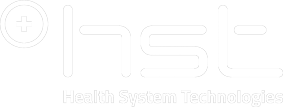
Healthcare in South Africa is always under the spotlight. This is particularly the case for large-scale delivery of healthcare services. Although not unique to the South African environment, challenges include patients' files being lost, tests duplicated, not to mention the patient being asked to supply all their information and medical history from scratch each and every time they visit a new healthcare provider.
Patients in most cases receive care in multiple locations and the resultant lab tests, prescriptions and consultations generate large amounts of data that's widely dispersed and hard to access at the point of care.
Imagine how much more efficient it would be if each patient had a single file that could be shared across all healthcare providers? All their tests, prescriptions, consultations, allergies and even surgeries stored in a central repository and available online to any authorised provider who is treating that patient.
It's possible to create a single view of a patient across public and private healthcare and across all healthcare providers. This is done by creating a unique patient identifier that can be used to track patients as they move between healthcare facilities and practitioners.
"In fact, a provincial unique patient identifier has been operational for almost 20 years and is delivering results on a large scale within the South African healthcare service," says Leon Wolmarans, business development manager at Health Systems Technologies.
The upshot is more efficient service provision, improved dispensing of medication, the ability to track results, as well as improved gatekeeping on the ordering of tests and medications. The ability to share a patient's record also allows community service providers to close gaps in care and ensures needs such as transportation or behavioural healthcare management are met for at-risk patients. "These are just a few of the benefits to both patients and healthcare providers," says Wolmarans.
Any government's ability to provide its population with universal healthcare services requires this type of solution, he continues. "The seamless provision of healthcare across sectors, territories, practitioners, providers and specialities can only be achieved if we can create a cradle-to-the-grave view of a patient. We need a continuation of care record that extends across all health and well-being interactions that the patient has in his or her lifetime."
Meaningful information sharing
"We're talking about an electronic continuation of care record linked via the unique identification of patients, which is key to creating cradle-to-grave health records. It ties together the patient journey from past, present and future interactions," explains Wolmarans.
Implementing a unique patient identifier solution establishes unique and unambiguous client (patient and/or payer) identities that can be shared among facilities/providers. The participating facilities/providers are uniquely identified for purposes of authentication, and assigned roles and permissions.
A participating facility (such as a hospital) can access the client record with the same folder number or patient number that is used at that hospital. However, each client also has an overall identifier that can be used to collate information from various providers as a 'single patient view', track referrals between providers/facilities and perform analytics on headcounts rather than visit counts.
As data collection and management is regulated via defined industry standards, interoperability controls the client record and supports numerous data types, both structured and unstructured, including images, documents and messages, from clinical, administrative and patient sources. The latter could include data from wearable technology such as a smart watch, says Wolmarans.
A patient portal allows patients and families to view their health history and plan interventions as well as gain better understanding of their health status. The consolidated patient view also enables more pro-active intervention through wellness initiatives to empower individuals to manage their day-to-day health.
Keeping the data safe
It's all well and good to have a single view of the patient in a file that's accessible across healthcare practitioners countrywide, but at the same time that highly sensitive data needs to be kept secure and compliant with data protection legislation, regulation and normative standards.
"This requires very complex consent management while allowing for 'break the glass' protocols," says Wolmarans.
Patients or clients have the ability to electronically consent to their information being shared. In addition, only appropriate providers are able to access the information and with granular consent controls, sensitive data can be managed consistent with patient preferences and local regulations.
In the event of a patient/client not being able to give consent (i.e. an emergency), under certain predefined circumstances, some of the records can be accessed but that access is fully audited and traceable.
What the future holds
Wolmarans says it's even possible to pre-populate the patient or client file with data drawn from various sources, such as the databases of the participating facilities, medical aids individually, or the Council for Medical Schemes databases, and then add additional clients organically as they visit participating facilities. It's also possible to match, find and identify clients by other identifiers, such as South African national IDs, passport numbers, medical aid numbers and pension numbers.
Validation services against external databases are also possible, but there are external dependencies to overcome in this regard. Wolmarans says: "If you could link into other government systems, such as Home Affairs, for example, you'd be able to see whether a person being treated for strange symptoms had recently visited a country known for a particular type of disease."
Share
